The snow kept falling; the macarons and chai kept coming. I’d been in Gulmarg almost a week now but had hardly skied. Alison, an American woman I’d met, shared a room with me, huddling around a tiny wood heater in a small, cheap hotel that sunk ever deeper below its white blanket. I’d spent the previous two months ski touring in the Indian Himalaya, my first experience both of those mountains and that activity. Not a bad place to learn. With my companions headed home, I’d gone west to Kashmir to find Gulmarg: India’s ‘premier’ ski resort, with its short, rickety old chairlift and a couple of struggling pomas.
Cut to 2019. “Your robe Mr Kingston,” smiled the attendant as I emerged from the pool; a pool with a wall of clear glass looking out onto snow-capped peaks. A wall of glass with equally clear icicles hanging down it, four metres or more in length. I repaired to my warm room in the luxurious Khyber Resort & Spa, promising myself a massage in the Spa section before the week was out.
What a difference 30 years makes. After my first visit to Gulmarg in 1987 I’d fallen head over heels for the Himalaya in winter. Indeed I fell time and again, under heavy packs on numerous ski tours through those mountains, criss-crossing ranges in Zanskar, Kulu, Lahaul, and Garhwal. But winter 2019 was my first time back to Gulmarg.



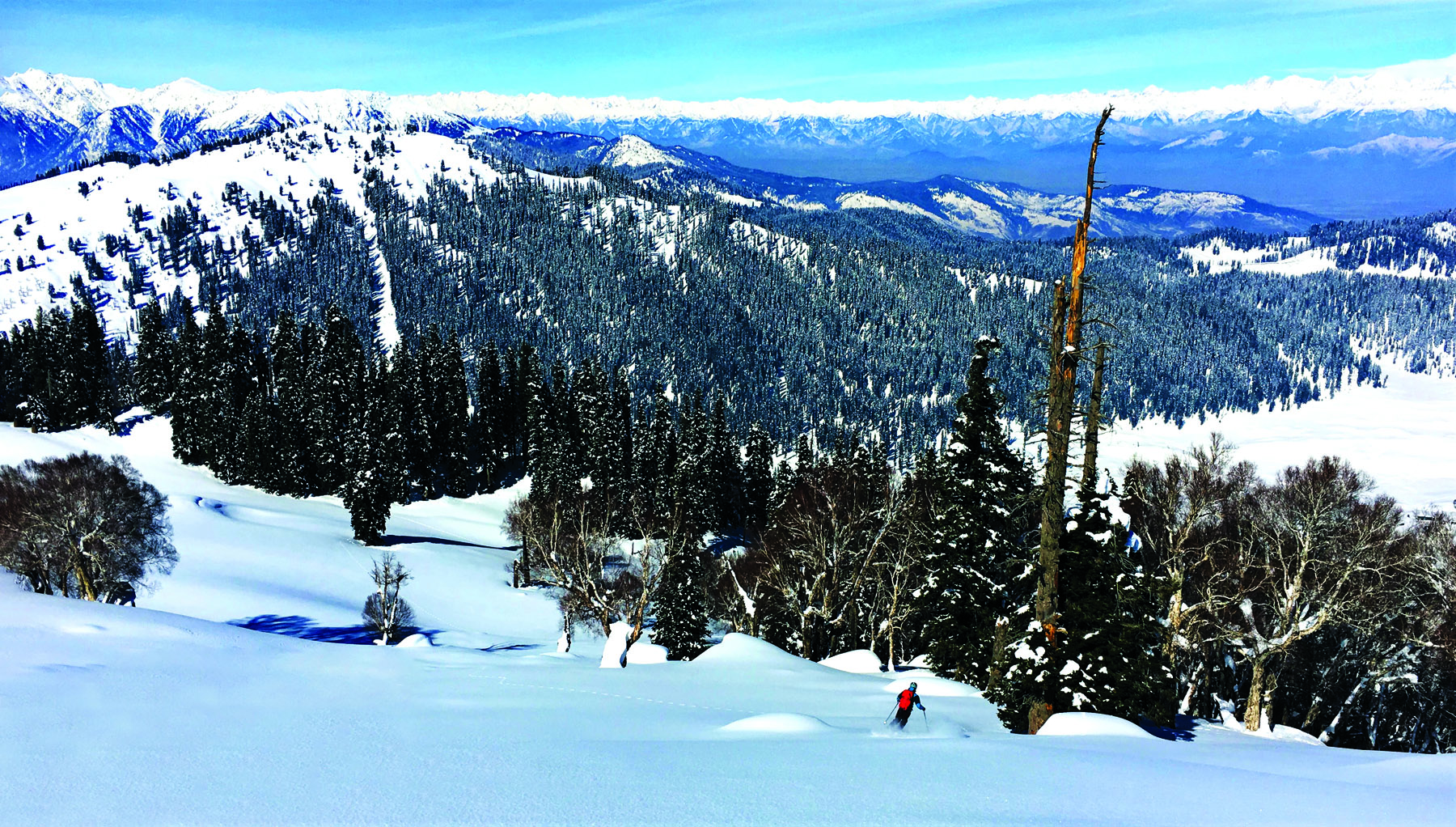
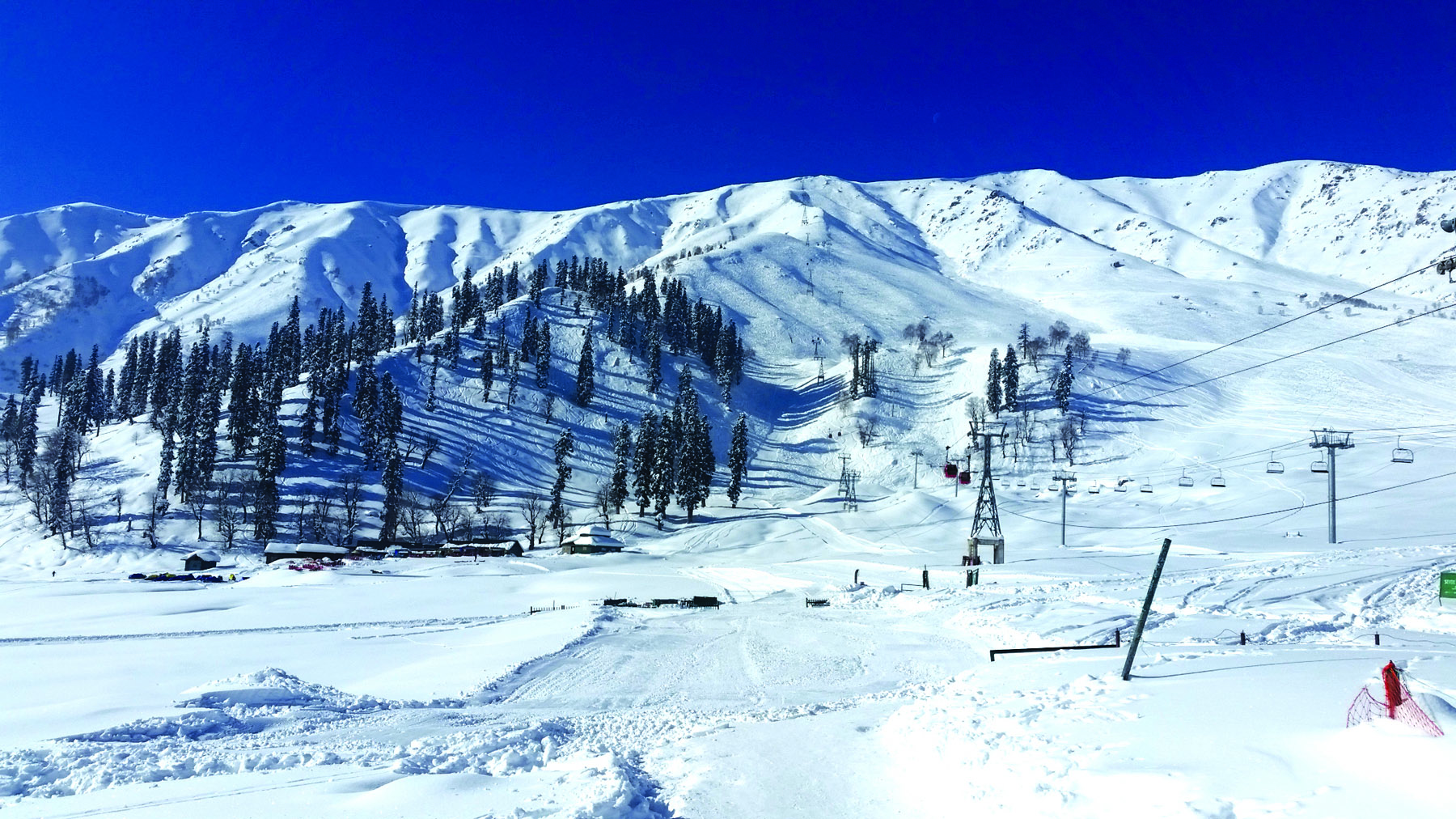
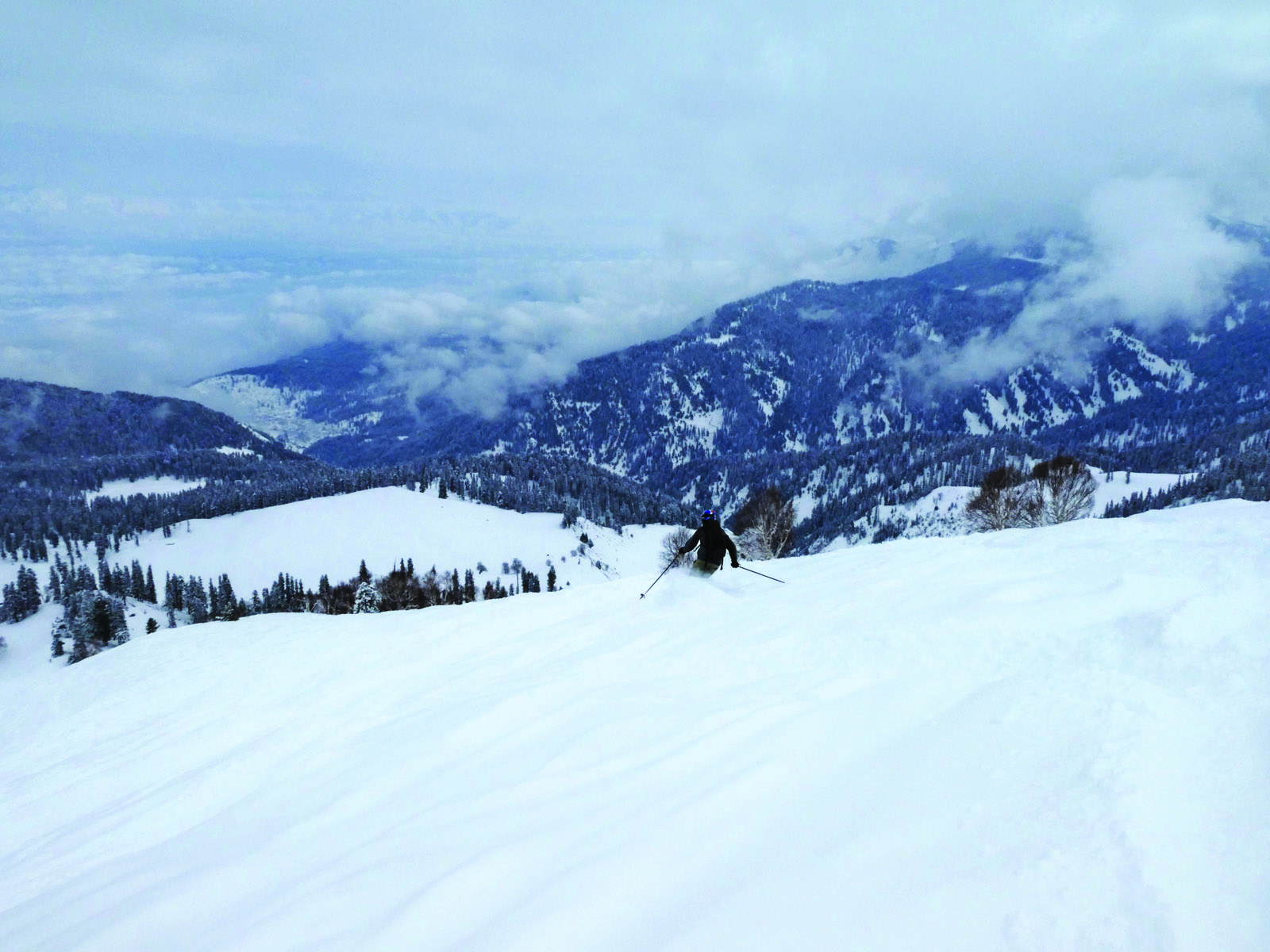
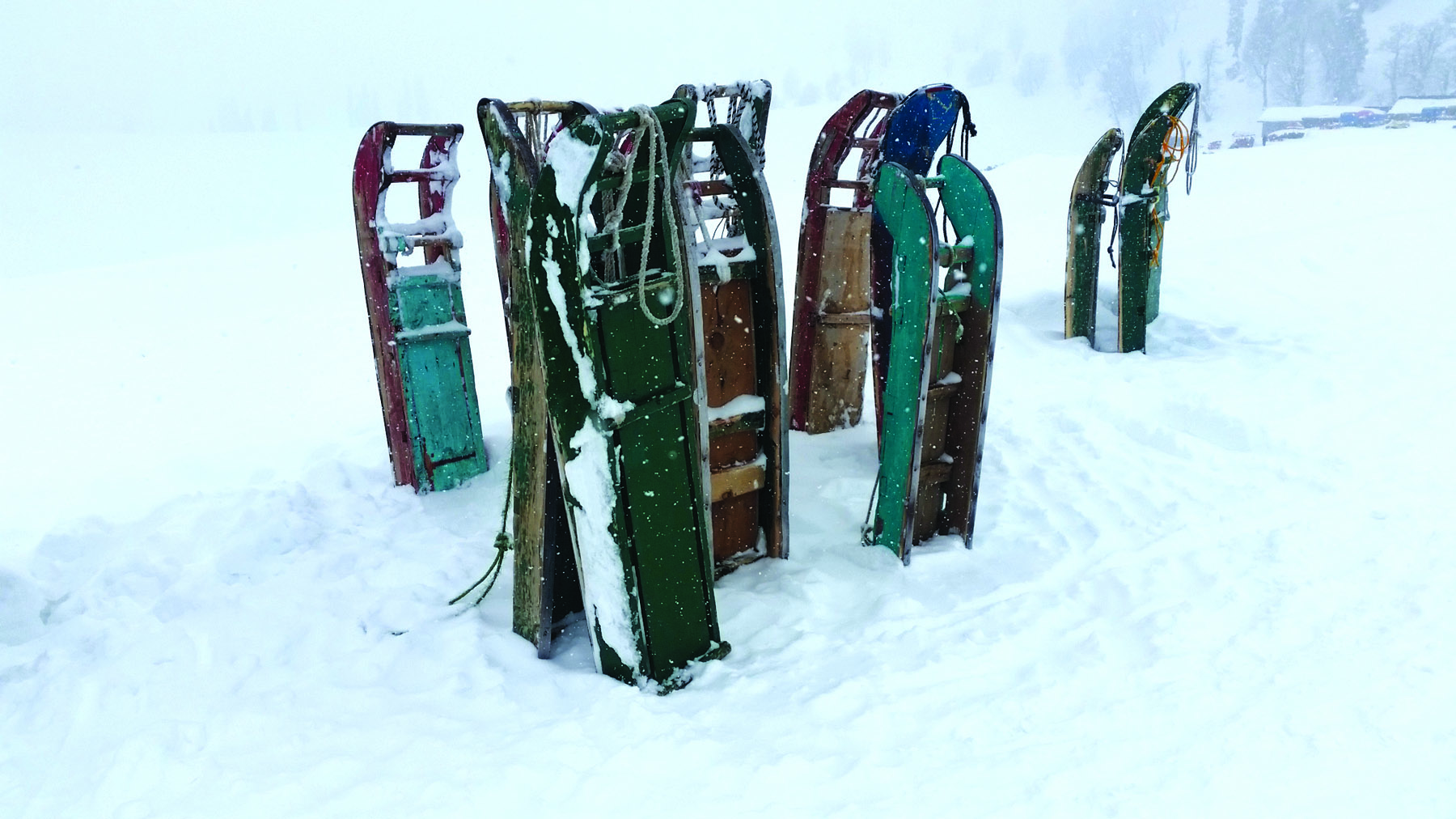
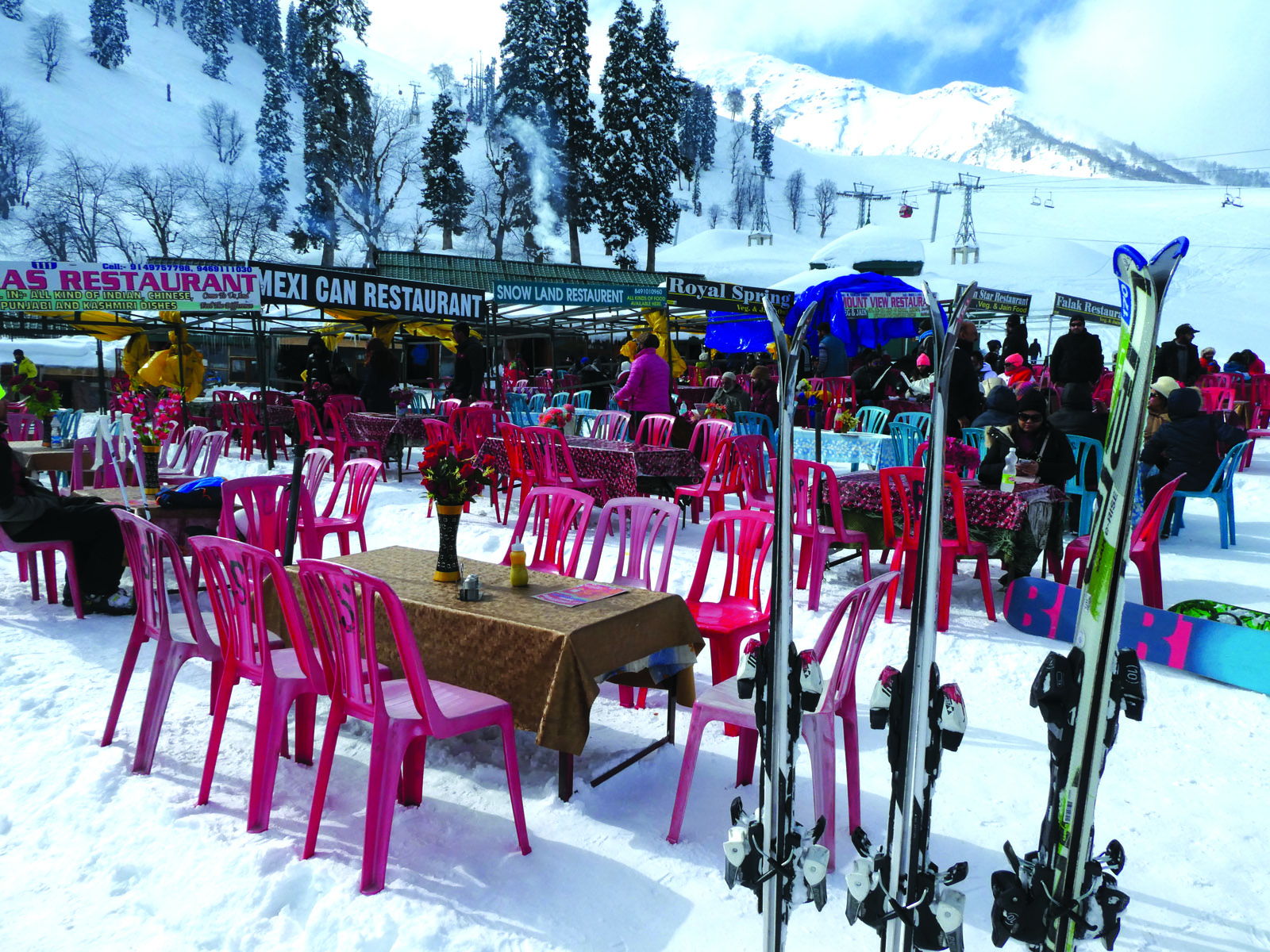
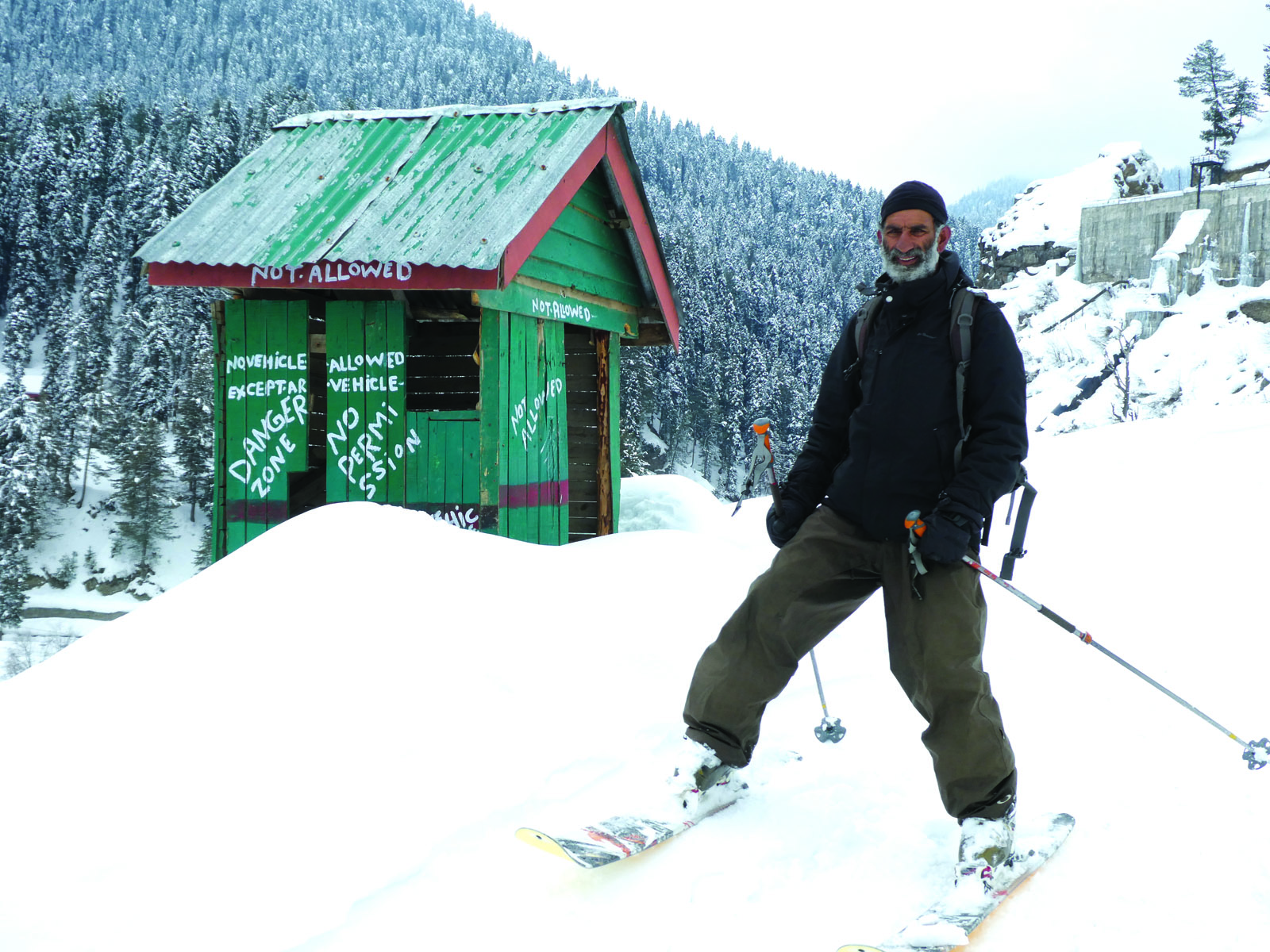
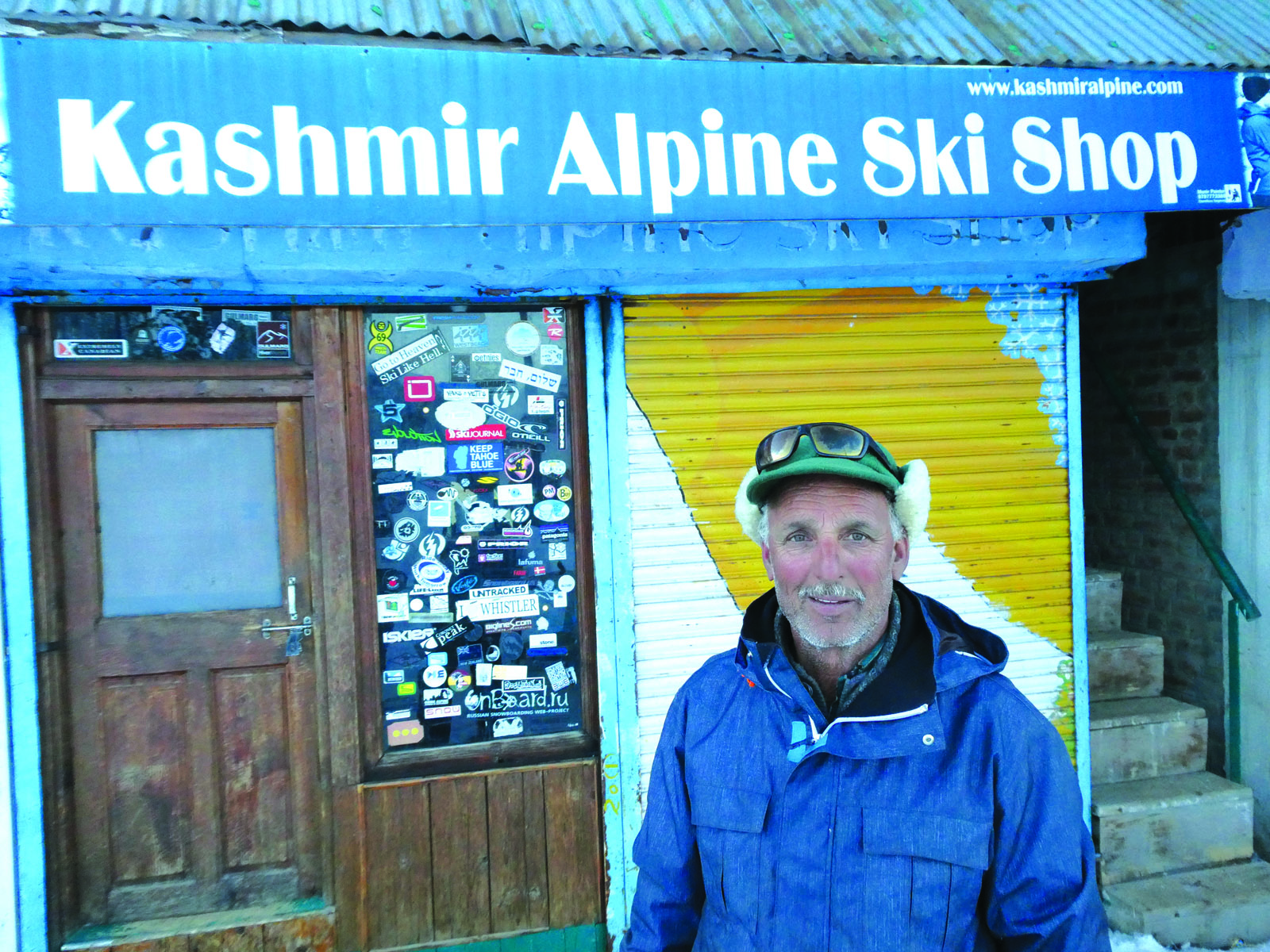

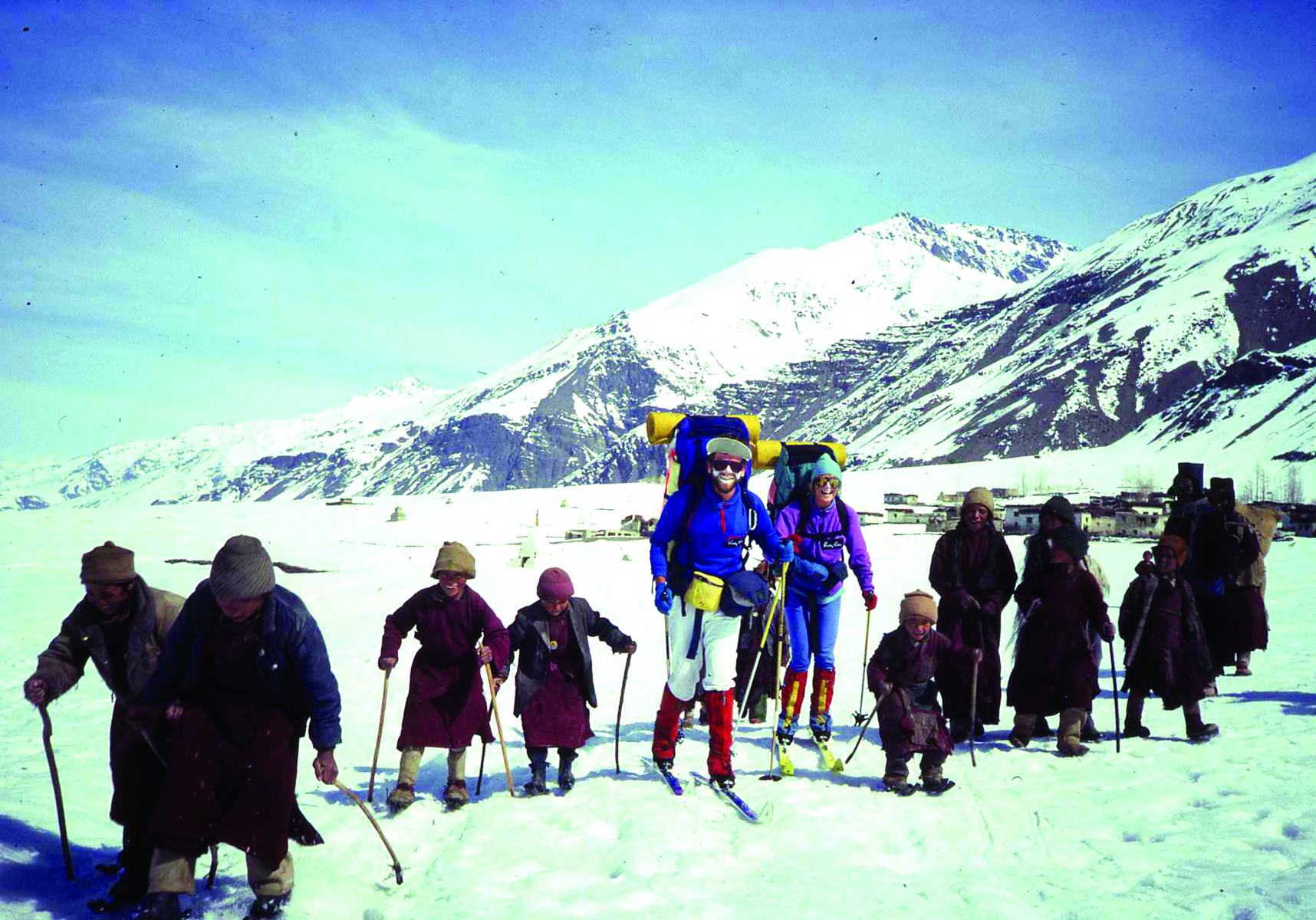
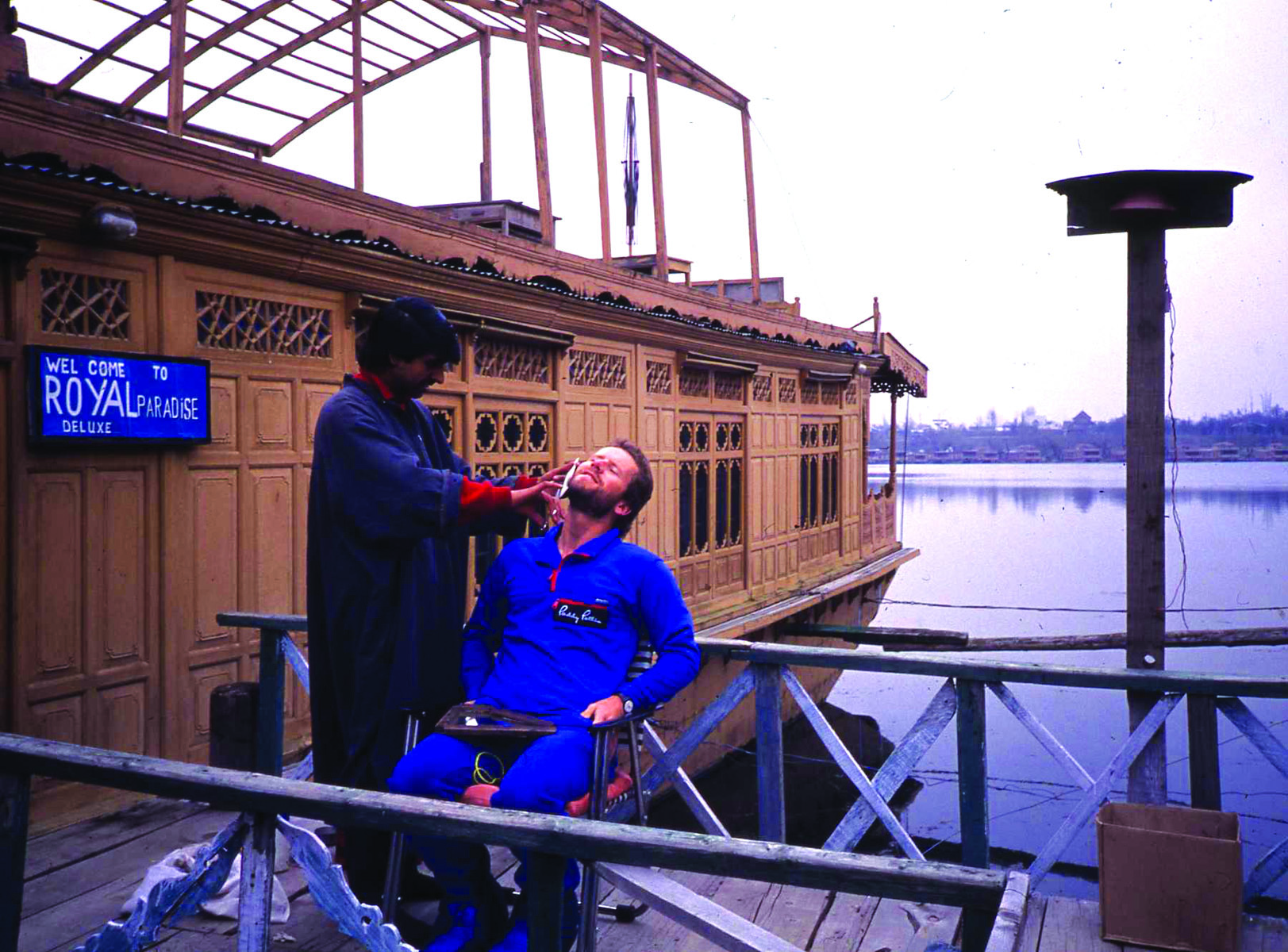
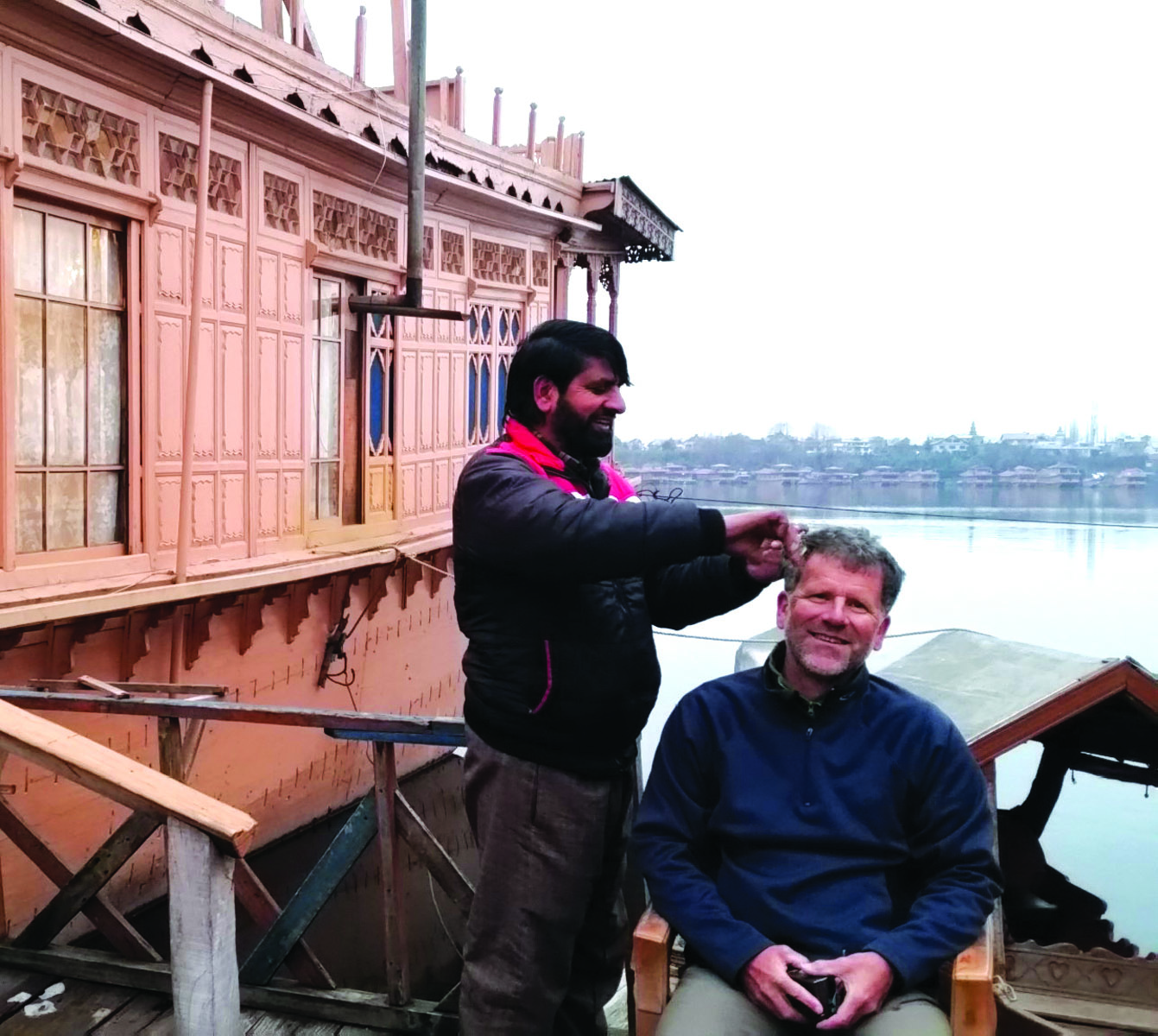
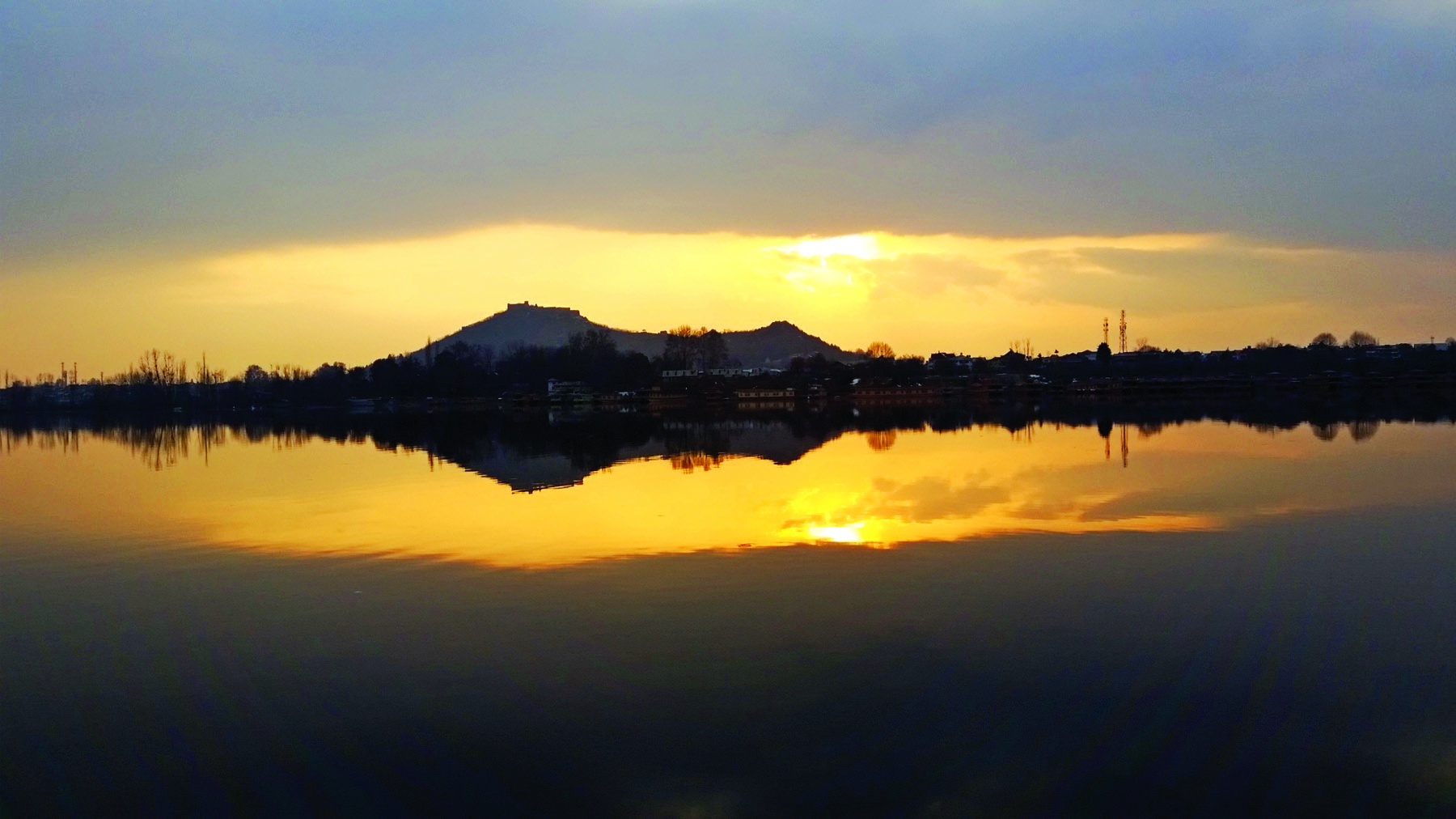
SETTING THE SCENE
Before that soothing swim I’d skied down through fresh powder from the top of a modern gondola which, at nearly 4,000 metres, is the highest lifted point in the world. My thighs had packed in, my lungs still suffered from the altitude – only days earlier I’d been below sea level, scuba diving in Kerala 3,000km away at the opposite end of India.
Gulmarg is the only ski area in the world from which you can see one of the world’s 8,000 metre peaks: Nanga Parbat, the ninth highest mountain in the world. A mountain that is behind the disputed Line of Control in Pakistan; a line that tells much about the conflict in Kashmir over the past 70 years.
When India obtained Independence in 1947, Kashmir was split between the new nation of Pakistan and India.
The two countries have gone to war three times since then and tension always prevails. Since the late eighties, a separatist movement has emerged within Kashmir. In reaction the Indian government has stationed thousands of troops there. Whilst this presence is noticeable the impact on tourists is negligible and not at all in Gulmarg (provided you ignore the High Altitude Warfare School).
Gulmarg itself sits at 2,650 metres on a large alp or summer meadow. Across this are scattered numerous hotels and lodges of all standards, the Ski and Mountaineering Institute, and a clutch of poma lifts offering what the Indians call their ‘bunny’ or beginner slopes. A network of narrow roads link it all together which, when snow covered, make for interesting driving. In the typical Indian driving approach of ‘take no prisoners, give not an inch’, everything from 4WD jeeps to Delhi city cars slide and slither their way in a dodgem manner between locations. The same applies in order to reach Gulmarg from Tangmarg, at the base of the mountains. Here 4WD taxis jostle for business to get you up to Gulmarg. The 10km can take two hours or more in snowy conditions.
Blocking the view to the west 1,500 metres above Gulmarg is the Apharwat ridgeline. The top station of the Gondola attains this at 3,950 metres and the ridge itself runs for kilometres. It is this, easily accessed from the gondola, that now attracts experienced off-piste skiers from around the world, providing, as it does, dozens of steep lines.
Phase 1 of the Gondola was built in 1999 and takes you 500 metres up to the alp of Kongdori. Rusting towers from the old chairlift pop out from the snow below you. Phase 2, built in 2006, then takes you to the top station. Also from Kongdori, a modern chairlift, built in 2012, takes skiers up to 3,500 metres.
On a fine day Kangdori is a bustling place. A long row of dhabas (restaurants) are set up for winter offering Biryanis and Bhel Puris. Sledge wallahs cry out for business, offering tows on their chunky wooden sledges. Skidoos scream by, their cargo of pleasure-seeking Indians screaming in unison. Snowball fights are everywhere. You see, most people who come to Gulmarg don’t come to ski. As the Indian economy has boomed so has domestic tourism. Millions are looking for ways to spend their new wealth and thousands come to Gulmarg to experience snow for the first time.
SLEDGES IN THE SNOW
This leaves the skiers and boarders amongst us to slopes that are often near deserted. I’d teamed up with Aadil, an apprentice motor mechanic from Tangmarg whose engine was decades younger than mine. In turn we skied with Ashama and Jayan, outdoor enthusiasts spending a month honing their ski skills. Grooming at Gulmarg is minimal; a line from the top of the chair back to Kongdori and one down through the trees back to Gulmarg. Signage too is scarce.
On a run down through these trees I came across a Canadian couple, Kevin and Erica. Nearby some Kashmiris sledge wallahs were pulling their loads. The three of us debated whether it was a sled or sledge. I explained sledging, the cricket term, to them. “I’ve never heard that use of the word,” said Kevin. “You won’t believe my surname though,” he followed. I’d just met Kevin Sledge.
We met again later that evening at the Gulmarg Avalanche Centre weekly talk, packed into a small room at the Pine Palace Hotel – one of only two places in Gulmarg where an après ski beer can be had. An international crowd of some 60 people were there to hear Brian Newman, head of Gulmarg Ski Patrol and founder of the Avalanche service, outline the current dangers on the mountain and provide avalanche information in general.
HEROES OF THE INDIAN SKI FIELDS
Brian, a Canadian, has been working in Gulmarg for some six years, heading up a ski patrol that, apart from him, is staffed by Indian skiers. Training up a ski patrol was, however, originally the work of Australian Bill Barker. Bill, who heads the ski patrol at Mount Hotham, ran some training courses in the mid 2000s. He now runs highly regarded ski holidays in Gulmarg every season based out of the Highland Park Hotel.
The Highland Park is one of the original hotels of Gulmarg and has a real traditional ski atmosphere based around its cosy lounge and bar (it’s the other place to get a drink). I remembered it from 1987 but was back there this time with Yazeen Khan. My good friend Akshay Kumar, who missed out representing India at the 1988 Winter Olympics due to a training injury, had deputed Yazeen to ensure I was well looked after. Yazeen has been in Gulmarg since 1972 and now runs the Kashmir Alpine Ski Shop. The shop stocks some pretty modern gear; a far cry from what was available a few decades ago.
On a couple of occasions in the mid 90s I’d taken 30 pairs of ex-hire ski gear from Perisher ski resort here in Australia to give to a friend of mine teaching Indians to ski in the Kulu region of the Himalaya. At Solang ski area – think one 100 metre long poma lift that rarely worked – I laughed the first time I watched as beginner Indian skiers hired a couple of porters to be their ski lift. The wiry porters would, with some difficulty, push the person uphill, turn him or her around at the top and let go…
But this was nothing compared to coming across what I called the Zanskari Ski Team. In 1991 four of us were skiing from Kashmir to Kulu, a journey of over a month wending its way through the Indian Himalaya.
Early one morning, in the Zanskar valley, we were skiing below a small village; a village cut off for six months of the year by snow. I looked up to see some small dots moving down the slope toward us. They were moving too smoothly to be running. More dots followed them and within minutes we were surrounded by a dozen or so Zanskari children, some as young as four. All were wearing the traditional purple woollen robes. All were wearing skis fashioned from lengths of plastic water pipe with a wire bail as a ski-binding across their felt woollen shoes. None had probably ever seen our type of skiing before.
HARD-EARNED RELAXATION
With snow bucketing down and not a breath of wind I bought my last full day ski pass. For some reason the ticket office at Gulmarg is in a little hut with a tiny window you can hardly see the ticket wallah through; him indoors, you out. At times you had to hold onto the window bars to stop slipping down the icy steps. It all seemed so irrational when the gondola bottom station 100 metres away is a spacious building with loads of room for a spacious ticket office.
After too much fun we lunched at the Kong Posh restaurant underneath the Gondola mid-station at Kongdori. It would have to be the only ski restaurant anywhere built with neither windows nor terrace to take in the mountain views. But on this viewless day it mattered not. There was no view either when, back at the Khyber Hotel, I buried my face in a warm towel for 90 minutes for perhaps the best massage I’ve ever enjoyed. If I’d travelled 3,000km the length of India from Kerala to Kashmir for the pleasure, Manu had come 3,000km the width of India from Mizoram to give it to me.
ONE LAST RUN
“I’m 52 but have had a hard life,” said ski guide Wali, as if to explain his grizzled experience. There was one more ski to enjoy. Yazeen had organised for Wali to take me down Wali’s World: a run from up on the mountain down to the village of Drang and along to Tangmarg. When he introduced himself, I suddenly remembered the shop sign I’d seen in Kashmir decades ago proudly proclaiming the store was run by Useless Wali.
His namesake would, however, turn out to be very useful as we plunged into a cloud sea from the top of the chairlift and soon found ourselves descending a series of ridges and bowls for some 1,300 metres into the Drang Valley. At times a reminder that both my choice of line and ski control were somewhat lacking. Once in the valley we came across a couple of soldiers hiking to a military camp up valley; a reminder how close the actual Line of Control was.
After a chai at Drang village we skied through snow covered apple orchards to a waiting vehicle at Tangmarg. Two hours later I was enjoying lunch on the India Palace houseboat, floating on Nagin Lake in Srinagar, Kashmir’s capital. We’d stayed on the same houseboat ahead of our Kashmir to Kulu ski traverse back in 1991. The Badyari family welcomed me aboard again.
Weeks earlier I’d been preparing some images for a travel story on barbers around the world – close shaves and all that – and had scanned an old image of me being shorn in 1991 on that houseboat. I showed Bilal Badyari the image. “Bashir the barber man is still here,” he said. “Let me go get him.”
And so it was that Bashir, then 18 now 45, gave me a shave and a head massage in the same place as the sun went down across the lake, a shikara floated beneath it and the muezzin called the faithful to prayer. What little difference 30 years makes.
Huw would like to thank the Khyber Hotel and the Adventure Tour Operators Association of India for getting him back to Gulmarg.
FAST FACTS
Gulmarg is probably not the place you’d travel to ski as a beginner unless you happen to be in India. Intermediate to advanced skiers will get the most from it.
There is plenty within the inbound, patrolled area for a week or two. Whilst it has changed massively in the past decades, don’t expect all the on-mountain facilities.
A huge amount of terrain is available for touring and off-piste skiers but comes with the usual mountain threats of avalanches and bad weather. Go with an operator like Bill’s Trips or book a local guide if you don’t have the experience.
Getting there
There are regular flights from Delhi to Srinagar (90 mins). It’s about another 90 minute drive in a taxi to Tangmarg where you will usually changeover to a 4WD taxi for the final 10km up to Gulmarg.
When to Go
Despite its location Gulmarg can have a surprisingly short season. Bear in mind that 3,000-4,000 metres is low in Himalayan terms. The season usually gets going in mid-January and finishes in mid-March, although lifts are open early January to late March. Of course, good ski touring in the surrounding mountains can be ideal in the Spring months.
Where to Stay
There is a big choice of accommodation now, from the five star luxury of the Khyber Resort & Spa (www.khyberhotels.com), the tradition of the Highland Park, to mid-range places like the Shaw Inn and Pine Palace. Full board costs will range from 5,000-40,000 Rupees per night (AU$1 = approx 50 Rupees). Don’t believe many hotels’ claims that they are ‘ski in, ski out’ and, at the lower level, check that if heating is advertised in the room, it is actually switched on.
Lift Tickets
It’s not so simple. The beginner lifts down in Gulmarg itself are run by the state tourism association and cost 200Rs per day. The Gondola and Chairlift are owned by another government company.
Lift prices are more expensive for foreigners and you can buy day or weekly passes that cover Phase 1 of the Gondola or those that cover Phase 2 + Chairlift. If you want to ride both Phases you need two passes! A day pass for Phase 1 is 1200Rs, for Phase 2 + Chairlift 1900Rs.
Mobile Coverage
The government, for supposed security reasons, does not allow prepaid Indian mobile phones or international phones in Kashmir. This makes on-mountain communications a bit difficult, but on the other hand you can enjoy the device-free serenity.
Useful Resources
- Gulmarg Avalanche Advisory – regular posts on mountain and avalanche conditions. See www.facebook.com/groups/gulmargavalancheadvisory
- Ski Gulmarg – a good general information website run by a Canadian skier who also organises tours in Gulmarg. See www.skigulmarg.com
- Bill’s Trips – Bill Barker is an Australian who runs 15 day trips to Gulmarg including the resort and touring using NZ/US guides. See www.billstrips.com





